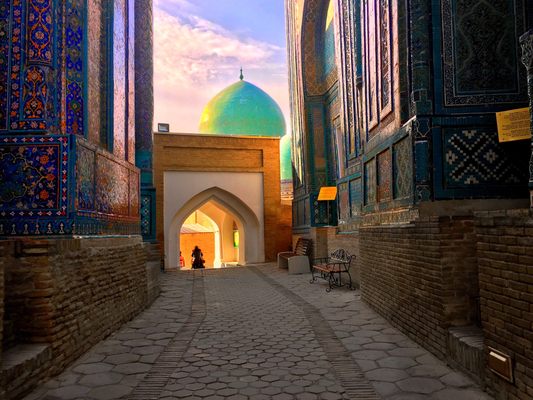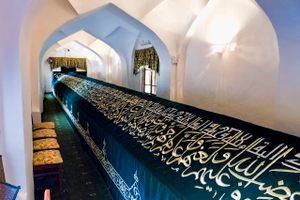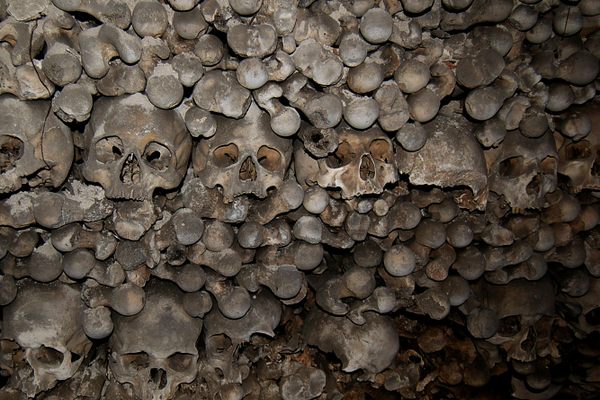About
Shah-I-Zinda is one of the oldest and longest-running examples of a continually constructed historic site in the world.
It was established with a single religious monument over 1,000 years ago. Various temples, mausoleums, and buildings were continually added throughout the ensuing centuries, from approximately the 11th century to the 19th. The result is a fascinating cross-reference of various architectural styles, methods, and decorative craftsmanship as they have changed throughout a millennium of work.
The complex was founded to mark a site of legend, where mythology states Muhammed's cousin, Kusam ibn Abbas, was buried. Like most legends, the story has persevered through time, but it is more rare for such historic sites to have endured as long, through centuries of war and weather, progress and expansion.
It may in fact be the extensive additions and re-imaginings that have kept the site sacred and respected. That, and the fact that Shah-I-Zinda is a necropolis, housing the remains of numerous people, both famous and unknown, has allowed the various constructions to remain intact for so long. This respect for the existing structures and the continual improvement of the buildings has lead to an interesting multi-tiered design, where layers of history and architecture intertwine between staircases, archways, and dusty paths.
One century intersects with another over the course of mere steps at Shah-I-Zinda. Its combination of hallowed ground and continual improvement has allowed this ever-expanding complex to remain fresh and vibrant in the eyes of both citizens and government, allowing it to be preserved and protected throughout the years.
Related Tags
Central Asia Road Trip: Backroads & Bazaars
A 2-Week, 4-Country Odyssey.
Book NowCommunity Contributors
Added By
Published
August 12, 2013














































